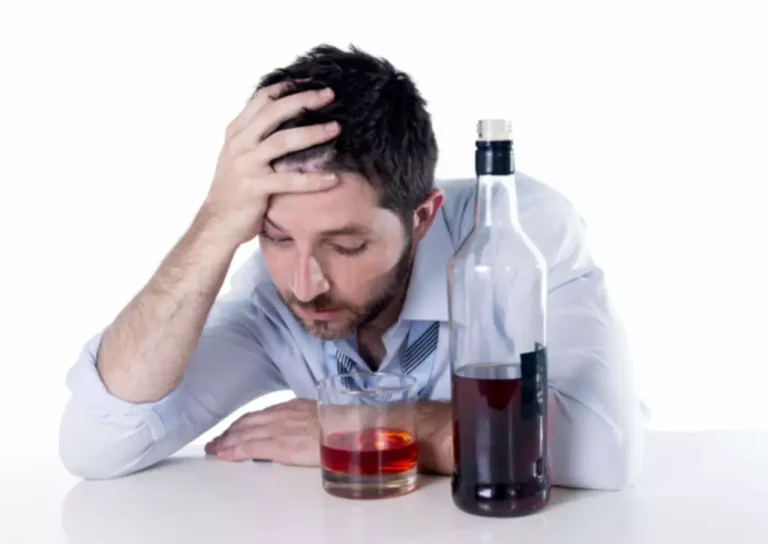
Ativan works by attaching to gamma-aminobutyric acid (GABA) receptors (binding sites). GABA functions in your body to slow down nerve signals, which has a calming effect on your nervous system. Join our supportive sober community where each day becomes a step towards personal growth and lasting positive change. If your drinking makes you feel out of control and you are ready to seek help, many organizations can assist you. Alcohol works as a depressant on the central nervous system and alters the function of gamma-aminobutyric acid (GABA) receptors. Inhibitory neurotransmitters prevent certain chemical messages from passing on.

Support for AUD
If you are concerned about potential alcohol withdrawal symptoms, talk to your doctor. A doctor can evaluate your overall health and alcohol abuse history to help you determine how likely it is that you’ll experience symptoms. Your primary care provider can advise you on where to seek care for the physical and mental symptoms of alcohol withdrawal. It’s very important to seek help if you struggle with alcohol use disorder.
- It’s rare for people going through alcohol withdrawal to experience hallucinations more than 48 hours after their last drink.
- If your symptoms are more severe, you may need to stay in the hospital.
- Other benzodiazepines commonly used for alcohol withdrawal include chlordiazepoxide (Librium), diazepam (Valium), and oxazepam.
- If a patient begins experiencing signs and symptoms of severe withdrawal, including but not limited to seizure, altered mental status, or agitation, they should seek emergency care immediately.
- If you seek treatment for an alcohol use disorder, you will likely begin with a medical assessment.
Clear Life Is
Detox alone may help you achieve sobriety, but that sobriety may be short-lived. Alcohol withdrawal can last for five to 10 days, but alcohol cravings and compulsions to use may continue for a long time. Even if you are no longer dependent on alcohol, you may have a compulsion to drink that’s hard to control. However, alcohol, along with other depressants, is among the most dangerous substances during the withdrawal phase, especially if you quit cold turkey. The overstimulating effects of alcohol withdrawal can lead to increased blood pressure, heart palpitations, sleeplessness, fever, hallucinations, panic, and seizures. When someone drinks alcohol for a prolonged period of time and then stops, the body reacts to its absence.
Diagnosis and Tests

Our aim was to review the evidence base for the appropriate management of the alcohol withdrawal syndrome using pharmacotherapy. We specifically sought articles relating to medications commonly used in India and those that can be recommended based on strong evidence. Individuals with alcohol withdrawal syndrome may experience nausea, anxiety, extreme fatigue, and even seizures and hallucinations.
- The side effects of Ativan when used off-label for alcohol withdrawal are expected to be similar.
- Once withdrawal is complete, additional medications and supplements may be needed to address complications and nutritional deficiencies that occur because of chronic alcohol use.
- If you or someone you know shows signs of delirium tremens, go to the emergency room immediately.
- You’re also at risk for AWS if you’ve previously had withdrawal symptoms or needed medical detox for a drinking problem.
With alcohol out of the equation, though, these chemicals cause withdrawal symptoms. The main ways to prevent alcohol withdrawal are to avoid alcohol altogether or to get professional help as soon as possible if you think you’re developing alcohol use disorder. The main management for severe symptoms is long-acting benzodiazepines — typically IV diazepam or IV lorazepam. For mild alcohol withdrawal that’s not at risk of worsening, your provider may prescribe carbamazepine or gabapentin to help with symptoms. But treatment varies based on the severity of alcohol withdrawal and the likelihood that it could progress to severe or complicated withdrawal.
Approximately one-half of patients with alcohol use disorder who abruptly stop or reduce their alcohol use will develop signs or symptoms of alcohol withdrawal syndrome. The syndrome is due to overactivity of the central and autonomic nervous systems, leading to tremors, insomnia, nausea and vomiting, hallucinations, anxiety, and agitation. If untreated or inadequately treated, withdrawal can progress to generalized tonic-clonic are alcohol withdrawal seizures dangerous seizures, delirium tremens, and death. The three-question Alcohol Use Disorders Identification Test–Consumption and the Single Alcohol Screening Question instrument have the best accuracy for assessing unhealthy alcohol use in adults 18 years and older. Two commonly used tools to assess withdrawal symptoms are the Clinical Institute Withdrawal Assessment for Alcohol Scale, Revised, and the Short Alcohol Withdrawal Scale.

A fixed daily dose of benzodiazepines is administered in four divided doses. Approximately 5 mg of diazepam equivalents [Table 5] is prescribed for every standard drink consumed. However, it needs to be based upon the severity of withdrawals and time since last drink.


Recent Comments